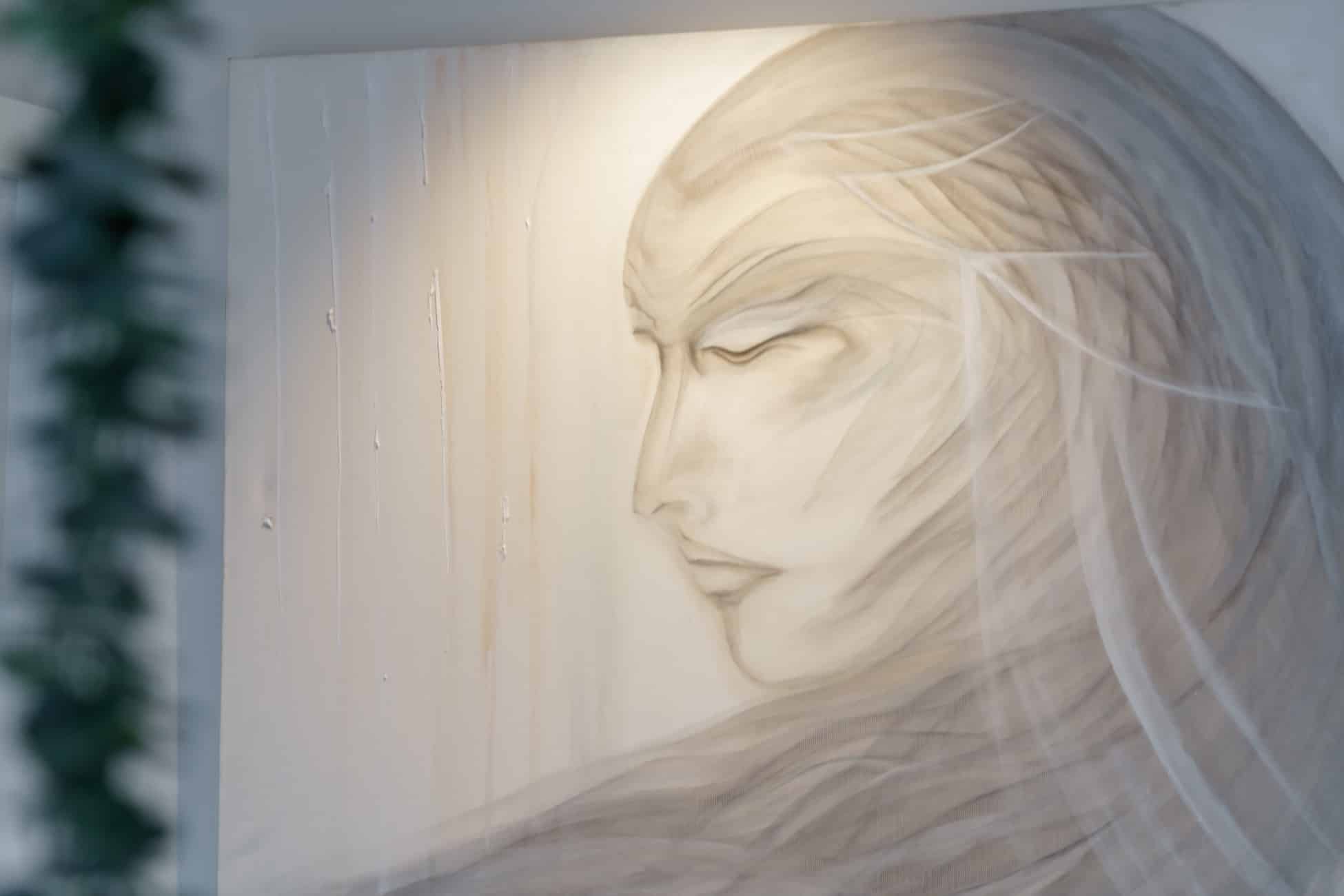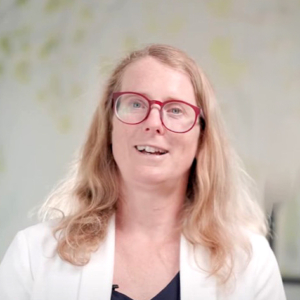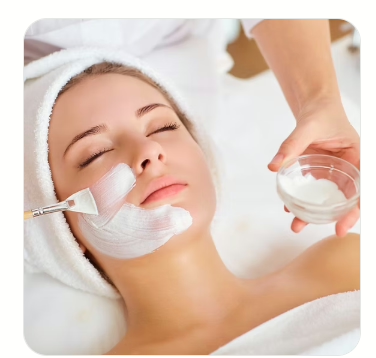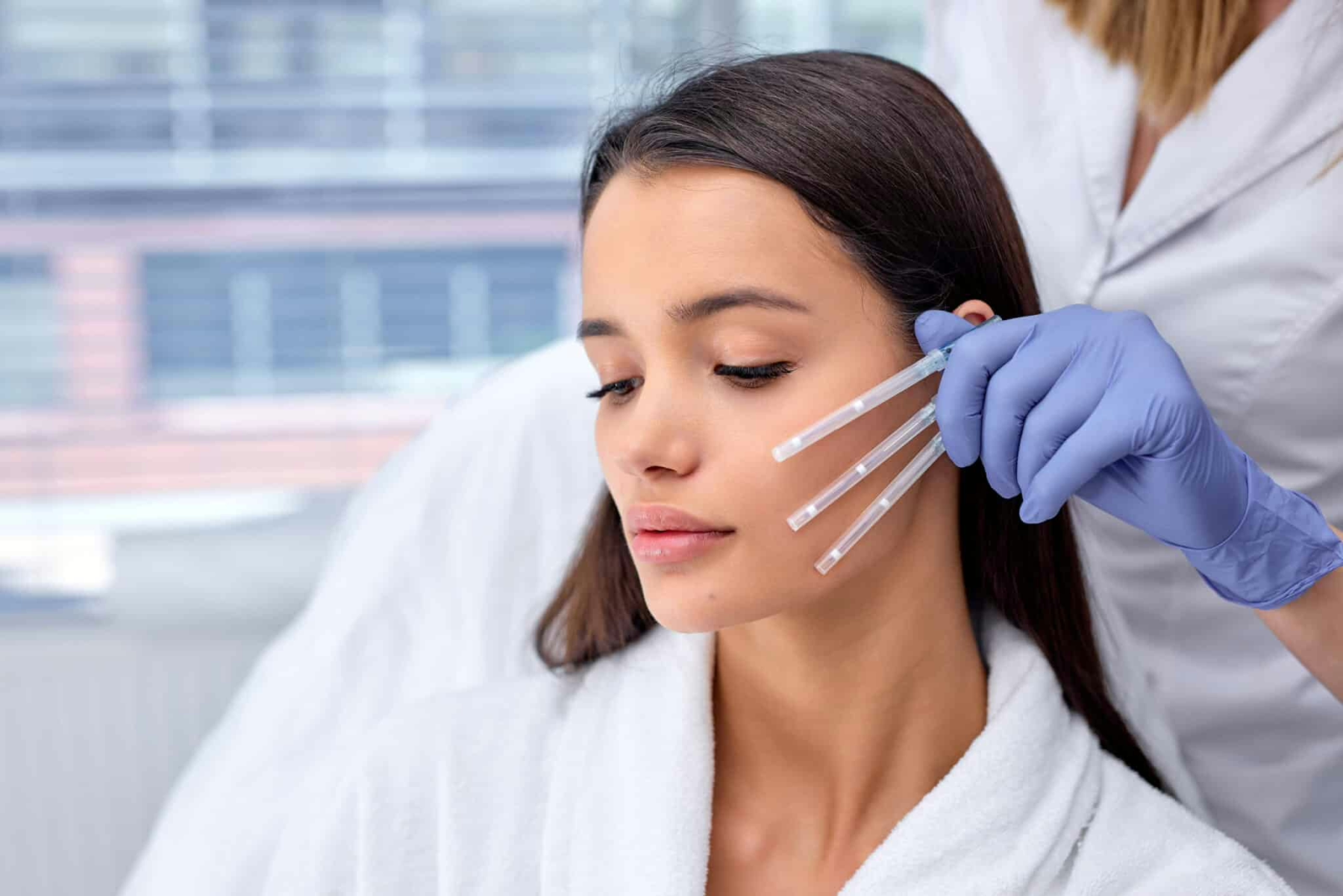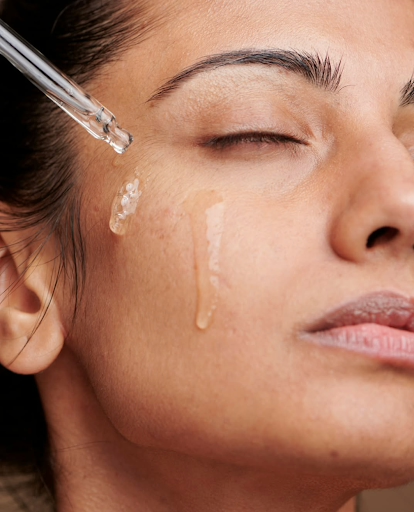Discover the Magic of Non-Surgical Nose Lifts: Your Path to a Beautiful Profile
The pursuit of beauty has always been an intrinsic part of human nature. From ancient civilizations to modern times, we have sought ways to enhance our features and redefine our appearances. And when it comes to our facial symmetry and proportions, the nose takes center stage.
For those of us who have ever felt self-conscious about our nose shape or size, the idea of going under the knife might seem daunting. But fear not, the world of aesthetic medicine has evolved a lot over recent years. Gone are the days when a surgical rhinoplasty was the only option for those seeking nose enhancements. Today, advancements in medical technology have given rise to non-surgical alternatives. This provides individuals with a safe, convenient, and effective way to sculpt their noses without the need for invasive procedures.
In this blog post, we will delve into the fascinating realm of non-surgical nose lifts with PDO Threads, exploring the benefits, process, and expected outcomes.
What is a non-surgical nose lift with PDO Threads?
A nose lift with PDO threads is a cosmetic procedure that uses absorbable threads that are made of Polydioxanone (PDO) to reshape the nose. A big advantage of this procedure is that you do not need surgery.
PDO threads are medical-grade sutures used for many years in various surgical procedures. The threads used for the nose lift have got tiny, little hooks attached to them. A doctor or nurse will gently insert the threads close to the tip of the nose. Once the threads are under the skin, the tiny hooks pierce the skin and lift it. As a result, the tip of the nose will also lift. Over the next 3 to 4 months after this procedure, the threads will gradually dissolve and turn into carbon dioxide. This means that they are not toxic. While the threads are dissolving, they stimulate collagen and elastin in the skin. This will continue to lift the nose for 12 to 18 months.
What happens during the nose lift procedure?
The nose lift with PDO threads involves the insertion of dissolvable threads made of PDO material into the skin of the nose. As a result, the nose can achieve a lifting and contouring effect.
Here is a general outline of the PDO thread nose lift procedure:
Consultation
The first step is to consult with a qualified cosmetic doctor who will assess your nose and discuss your expectations and desired outcomes. The doctor will evaluate your suitability for the procedure and address any concerns or questions you may have.
Preparation
Before your appointment, please make sure that you do not take any anti-inflammatories or supplements containing liver cod oil, omega 3 oil or rapeseed oil. Its is also best to avoid caffeine.
On the day of the procedure, the doctor or nurse will clean your area thoroughly. After that, you will get a local anaesthetic to ensure you are comfortable during the treatment.
Thread insertion
The practitioner will then use a thin needle or cannula to insert the PDO threads into the nose area. The threads are typically placed beneath the skin’s surface in a specific pattern or configuration, depending on the desired outcome. The threads have tiny barbs or cones that grip the skin, providing lift and support.
Once the threads are in place, the practitioner may gently manipulate and adjust them to achieve the desired shape and lift. This may involve lifting the tip of the nose, straightening the bridge, or addressing other specific concerns.
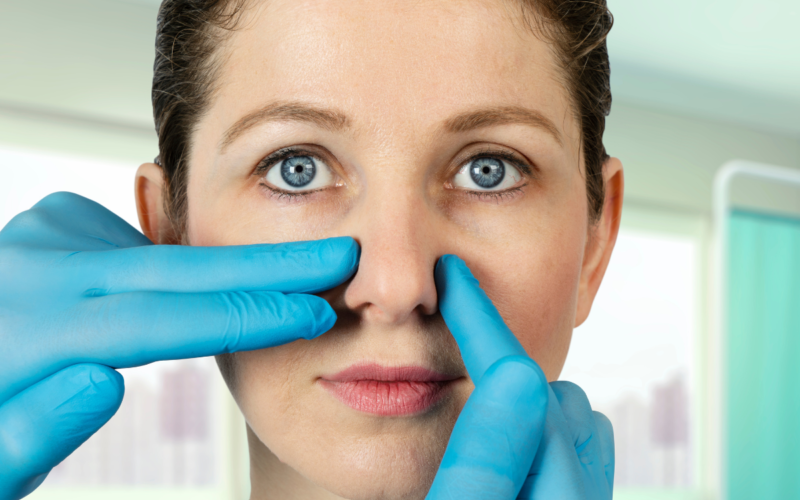
Who is a good candidate for a Non-Surgical Noselift with threads?
The PDO (polydioxanone) nose thread lift is a non-surgical cosmetic procedure used to enhance the shape and contour of the nose. It involves inserting dissolvable threads made of PDO material into the skin to provide structural support and lift to specific areas of the nose.
A suitable candidate for a PDO nose thread lift typically includes individuals who:
- Desire a non-surgical nose enhancement: The procedure is ideal if you would like to improve the appearance of your nose but do not want to have surgery at your current stage in life.
- Seek subtle changes: PDO nose thread lift is best suited if you are happy with subtle improvements in your nose shape and contour rather than dramatic changes. It can address concerns such as a droopy tip of the nose or a low nose bridge.
- Have good overall health: You should generally be in good health.
- Have realistic expectations: It’s important for you to have realistic expectations about the outcomes of the procedure. While a PDO nose thread lift can provide noticeable improvements, it may not achieve the same level of results as surgical rhinoplasty.
- Are not pregnant or breastfeeding: Women who are pregnant or breastfeeding should postpone the procedure until after they have finished nursing to ensure the safety of both the mother and the baby.
- Are over 18 years old: Candidates should be at least 18 years old to undergo a PDO nose thread lift. The nose structure typically stops developing by this age, ensuring stability and better results.
Who is not a good candidate for a non-surgical nose lift with threads?
While the nose lift with PDO threads is a less invasive alternative to traditional rhinoplasty, it may not be suitable for everyone. Here are some factors that might make someone a less ideal candidate for a non-surgical nose lift:
- Severe deformities or structural issues: Non-surgical nose lifts are primarily designed for individuals seeking minor adjustments to the shape or contour of their noses. If you have significant deformities, such as a severely crooked nose, extensive nasal trauma, or structural abnormalities, surgical rhinoplasty may be a more appropriate option.
- The desire for permanent results: Non-surgical nose lifts are temporary procedures. The results typically last anywhere from several months to a year. If you’re looking for permanent changes to your nose shape, surgical rhinoplasty is a better choice.
- Underlying medical conditions or medications: Certain medical conditions or medications can affect the healing process or increase the risk of complications. It’s important to consult with a qualified medical professional to make sure that you are safe to have the procedure.
It’s crucial to consult with a qualified and experienced medical professional before you have a non-surgical nose lift. They can assess your nose and guide you in making an informed decision about the best course of action.

How do I care for my nose after the nose lift?
Proper aftercare is essential to ensure optimal results and minimize potential complications. After the nose lift with PDO threads lift, your clinician will provide you with specific aftercare instructions tailored to your unique situation. It is crucial to follow these guidelines meticulously to promote healing and reduce the risk of complications. Adhering to the recommendations of your clinician will facilitate a smooth recovery process.
Immediately after your non-surgical nose lift
- Do Not Apply too many Cold Compresses: In the initial hours following the procedure, you may experience mild swelling and bruising around the treated area. We do not recommend applying an ice pack unless the swelling or pain is more than what you would normally expect.
- Avoid Touching or Pressing the Nose: To allow the PDO threads to settle properly, it is crucial to avoid touching, rubbing, or pressing your nose for at least a week after the procedure. Excessive manipulation of the treated area can disrupt the placement of the threads and affect the desired results. Be gentle with your facial hygiene routine and avoid any activities that may put undue pressure on the nose.
- Sleep with Extra Elevation: During the initial recovery period, it is recommended to sleep with your head slightly elevated to minimize swelling. Using an extra pillow or propping up the head of your bed can help in maintaining a more upright position while sleeping. This elevation will aid in reducing the pooling of fluids in the nose area, thereby promoting faster healing.
Over the next 72 hours
- Avoid Strenuous Activities: For the first week or two after the procedure, it is essential to avoid strenuous activities that could increase blood flow to the face and nose. Please avoid any activities such as intense exercise, heavy lifting, or any activities that may cause excessive sweating. An elevated heart rate and increased blood pressure can contribute to swelling and potentially affect the healing process.
General advice after the nose lift
- Practice Sun Protection: Protecting your skin from harmful UV rays is crucial after any aesthetic procedure. Direct sun exposure can cause hyperpigmentation and prolong the healing process. Therefore, we recommend applying broad-spectrum sunscreen with a high SPF. Please also make sure that you wear a wide-brimmed hat or use an umbrella when going out during peak sun hours.
- Maintain a Healthy Lifestyle: Adopting a healthy lifestyle during the recovery period can significantly impact the healing process. It is important that you eat a well-balanced diet and stay well-hydrated.On top of that, please avoid smoking and excessive alcohol consumption.
- Attend Follow-up Appointments: Regularly scheduled follow-up appointments with your clinician are vital to monitor your progress and address any concerns or questions you may have. These appointments allow your clinician to assess the results of the procedure and make any necessary adjustments if required.
Proper aftercare plays a crucial role in ensuring optimal results and smooth recovery after a non-surgical nose lift with PDO
How long will the results last?
It’s important to note that the results of a PDO thread nose lift are temporary, typically lasting for several months to a year, sometimes up to 18 months or longer. The threads gradually dissolve over time, but they stimulate collagen production in the skin. This can contribute to a longer-lasting improvement in the nose’s appearance.

What can go wrong when I have a non-surgical noselift with PDO Threads?
While PDO thread nose lifts are generally considered safe and effective cosmetic procedures. When you get PDO threads it is particularly important to make sure that the threads are FDA-approved. There are many, different types of threads out there but only a few of them are actually FDA-cleared.
Examples of FDA-cleared threads are MINT Threads and VSoft threads.
- Infection: Anytime the skin is penetrated, there is a risk of infection. While rare, an infection can develop at the insertion points of the PDO threads. It’s crucial to follow proper aftercare instructions and maintain good hygiene to minimize this risk.
- Swelling and Bruising: Swelling and bruising are common side effects after a PDO thread nose lift. While they usually subside within a few days or weeks, in some cases, they can be more pronounced or prolonged.
- Thread Extrusion: In rare cases, the PDO threads can push through the skin or become visible. This can occur if the threads are placed too superficially or if there is improper anchoring. If this happens, you may require additional treatment to correct the issue.
- Thread Migration or Displacement: There is a possibility that the PDO threads may move from their original position. Skilful and experienced practitioners can minimize this risk through proper technique and placement.
- Nerve or Blood Vessel Damage: Although uncommon, there is a risk of accidental injury to nerves or blood vessels during the insertion of PDO threads. This can result in temporary or permanent numbness, pain, or other sensory changes in the nose area.
- Allergic Reactions: PDO threads are typically made from a biocompatible material. But in rare cases, individuals may have an allergic reaction to the threads. Allergic reactions can cause redness, itching, or swelling at the treatment site.
- Unsatisfactory Results: Despite careful planning and execution, there is a chance that the final results of a PDO thread nose lift may not meet your expectations. Results are subtle and it’s important to have realistic expectations.
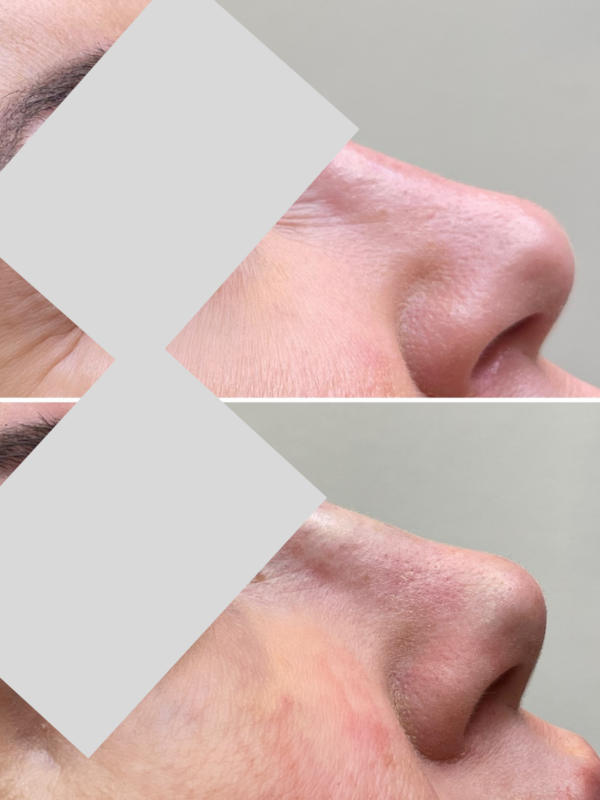
Are there any other treatments for the nose?
Yes, there are several other treatments available for the nose apart from thread treatments. Here are a few examples:
- Botox For The Nose: Botox can lift the tip of your nose slightly. To do that, the doctor or nurse injects tiny amounts of Botox into the muscles close to the nose. As a result, the tip of the nose appears more lifted. Read more about Botox for the nose here.
- Rhinoplasty: Rhinoplasty, also known as a “nose job,” is a surgical procedure that involves reshaping the nose to improve its appearance or correct functional issues. It can be used to modify the nose’s size, shape, and proportions.
- Dermal fillers: Dermal fillers are injectable substances that can be used to alter the shape of the nose non-surgically. By injecting fillers into specific areas, such as the bridge or tip of the nose, it is possible to achieve temporary changes in its appearance. However, the procedure is quite risky and several cases of blindness have been reported.
How much does a nose thread lift cost?
Prices vary but usually start at 600 NZD.
Book An Appointment
If you think you may benefit from a non-surgical nose lift, please contact us to make an appointment with a doctor. We will listen to your concerns and set up a personalised treatment plan.
